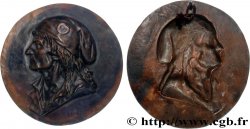E-auction 644-652989 - THE CONVENTION Médaille, Marat
Чтобы принять участие в торгах, вы должны войти в систему и стать подтвержденным участником аукциона. Войдите, чтобы сделать ставку. Ваш аккаунт будет подтвержден в течение 48 часов. Не ждите до закрытия торгов, чтобы зарегистрироваться.Сделав ставку на данный товар, вы вступаете в юридическое соглашение на покупку выбранного товара и нажатием кнопки «Сделать ставку» подтверждаете принятие вами условий интернет-аукционов cgb.fr.
Ставка может бить сделана только в полном эквиваленте евро. Торги закроются согласно времени, указанному в описании товара, все ставки, сделанные после закрытия торгов, учитываться не будут. Не следует откладывать предложение вашей ставки до последнего момента, так как система может не успеть обработать вашу заявку, и ваша ставка не будет принята. Более детальную информацию вы найдёте здесь: FAQ по интернет-аукционам.
БЕСПЛАТНО.
БЕСПЛАТНО.
2025/08/18 20:50:40
fme_1051993
644
Вам необходимо авторизоваться, чтобы сделать ставку
Нажмите сюда, чтобы войти
Тип Médaille, Marat
Дата: n.d.
Металл: copper
Диаметр: 27 mm
Ориентация осей монеты: 12 h.
Вес: 8,70 g.
Век: lisse
Пуансон: sans poinçon
Комментарии о состоянии
Jolie patine marron hétérogène. Présence de traces d’oxydation, de rayures, de taches noires, d’usure sur les reliefs et de marques de manipulation notamment sur l’avers. De légers coups sont présents sur la tranche. Le revers présente des concrétions vertes et un ajout de matière (reste d’attache de bouton probablement)
Лицевая сторона
Аверс: легенда: MARAT - 1746--1793.
Аверс: описание: Buste de profil à gauche .
Обратная сторона
Реверс: легенда: LISSE.
Комментарий
Jean-Paul Marat, né le 24 mai 1743 à Boudry (Principauté de Neuchâtel) et mort le 13 juillet 1793 à Paris, est un médecin, physicien, journaliste et homme politique français d’origine prussienne. Usurpateur de noblesse avant la chute du régime monarchique, il devient député montagnard à la Convention à l’époque de la Révolution. Il joue un rôle de premier plan dans les premières années de la Révolution, grâce à son journal, L'Ami du peuple. Fréquemment accusé d'inciter à la violence, il est l'un des principaux instigateurs des Massacres de Septembre.
Son assassinat par Charlotte Corday permet aux hébertistes et aux robespierristes de faire de lui un martyr de la Révolution, d'installer pendant quelques mois ses restes au Panthéon et de justifier la Terreur.(c.f.Wikipédia).
Jean-Paul Marat, born May 24, 1743 in Boudry (Principality of Neuchâtel) and died July 13, 1793 in Paris, was a French doctor, physicist, journalist, and politician of Prussian origin. A nobility usurper before the fall of the monarchical regime, he became a Montagnard deputy to the Convention at the time of the Revolution. He played a leading role in the early years of the Revolution, thanks to his newspaper, L'Ami du peuple. Frequently accused of inciting violence, he was one of the main instigators of the September Massacres. His assassination by Charlotte Corday allowed the Hébertists and Robespierrists to make him a martyr of the Revolution, to install his remains in the Panthéon for a few months, and to justify the Terror. (cf. Wikipedia)
Son assassinat par Charlotte Corday permet aux hébertistes et aux robespierristes de faire de lui un martyr de la Révolution, d'installer pendant quelques mois ses restes au Panthéon et de justifier la Terreur.(c.f.Wikipédia).
Jean-Paul Marat, born May 24, 1743 in Boudry (Principality of Neuchâtel) and died July 13, 1793 in Paris, was a French doctor, physicist, journalist, and politician of Prussian origin. A nobility usurper before the fall of the monarchical regime, he became a Montagnard deputy to the Convention at the time of the Revolution. He played a leading role in the early years of the Revolution, thanks to his newspaper, L'Ami du peuple. Frequently accused of inciting violence, he was one of the main instigators of the September Massacres. His assassination by Charlotte Corday allowed the Hébertists and Robespierrists to make him a martyr of the Revolution, to install his remains in the Panthéon for a few months, and to justify the Terror. (cf. Wikipedia)








 Cообщить об ошибке
Cообщить об ошибке Распечатать страницу
Распечатать страницу Отправить мой выбор
Отправить мой выбор Задать вопрос
Задать вопрос Consign / sell
Consign / sell
 Информация
Информация












